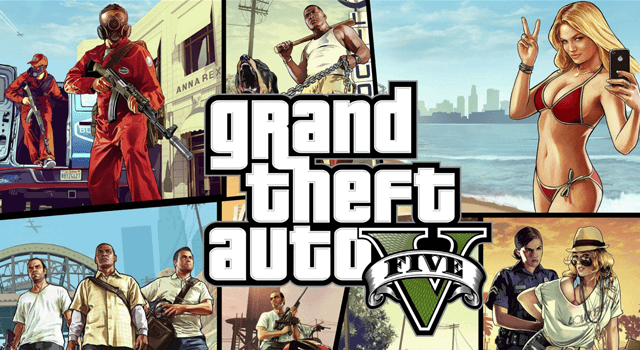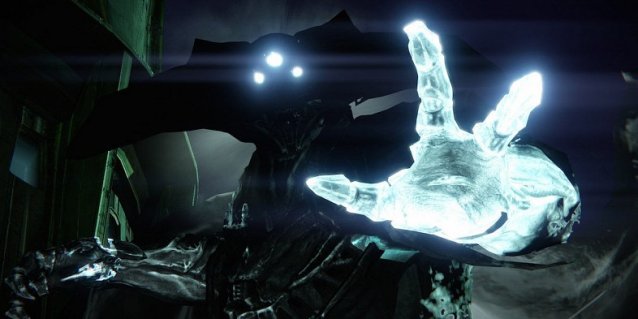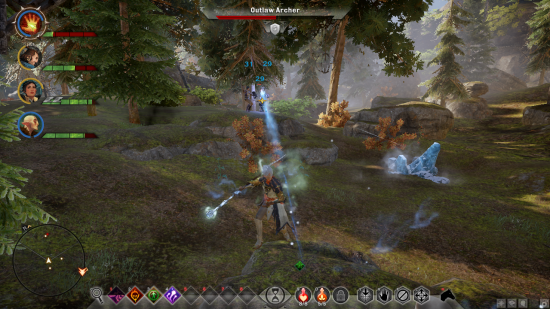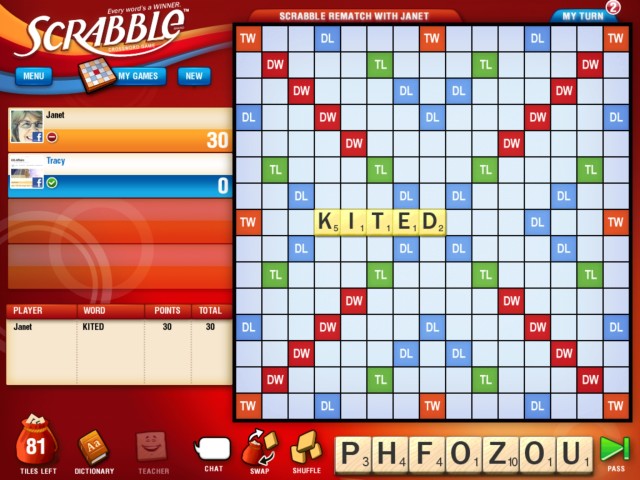

Freedom. Open-ended, strange new worlds, waiting to be explored at your own pace. Spiraling possibilities afforded by airy, freeform, dynamic combat. That’s what Halo is all about. And that’s what, a few presentational missteps and strange decisions aside, The Master Chief Collection is all about too.
Effectively a Halo jukebox, the MCC’s aim is to give you the Halo you want, customised to your own tastes, however and whenever you want it. Whatever your interpretation of, and preferences within, the series, this is your tool for realising them on a whim. A build-your-own-Halo kit of immense value to learned series enthusiast and eager-to-learn newbie alike.
All four numbered campaigns can be played straight-through or as individually selected missions. Themed playlists allow you to rattle through a concentrated burst of any Halo flavour you might fancy. Daring escapes? Have a whole block of them. Fancy a bit of tight corridor fighting? Pick your game, then have at it, entirely uninterrupted. Those difficulty-shifting, physics-bending, firework-launching skull modifiers you remember so dearly? They have their own menu too. Of course, well-paced, story-driven campaigns such as these are best experienced in their entirety, the first time through, but Halo also works so well 'in the moment' that this buffet approach to its varied gameplay is a very smart and welcome touch,
All of this is available from your first load up. Nothing requires unlocking. It’s a big bucket of fun, filled to the brim with every one of the series’ individual raw ingredients, ready to be reached into and consumed in any combination you wish. It’s all freedom. It’s all waiting to be explored at your own pace. As for the games themselves?
It’s a strange feeling at first, going back to the original Halo: Combat Evolved with objective, time-narrowed eyes, particularly through the stark retrospective lens forced by the proximity of its successors. To be blunt, in a variety of ways, the game is starting to feel old. That early, once-dramatic escape from the Pillar of Autumn now feels tame, sparse, even apologetic by modern standards. A couple of interior-focused later levels are inexcusably built of over-used, repeated architecture, copy-and-pasted again and again to create an uncomfortable sense of FPS Groundhog Day. But you know what? Ultimately, within the great scheme of Combat Evolved’s overall journey, none of that really matters.
Few action games can match Halo for vehicles. Because Halo doesn't treat its automotive additions as obligatory distractions, but rather as full-blown tools of its core arsenal, on a par with its guns and grenades. Their purpose is dictated only your own creativity, and the locations you can use them restricted only by how good you are at bending the rules of the road. And all of them handle beautifully, heft, control, physics and weaponry humming along together in perfect unison. Well, apart from the bouncy clown-car that is the Combat Evolved Warthog. But it gets better, I promise.
Because Halo’s combat. Good Lord, Halo’s combat. Despite the sometimes dated design on show elsewhere - emphasised by it, in fact - it’s staggering how far ahead of the competition Halo’s core gunplay still is. In 2014, only Bungie's own follow-up, Destiny, manages to emulate the same feeling. No mere case of ‘point-and-click to victory’, Halo’s skirmishes furnish an unparalleled sense of presence, of agency, of this being your fight, shaped and won by your own actions. With only a handful of main enemy types (three, at its core), Halo creates a complex, ever-shifting set of priorities and emergent, flowing strategies within an organic ecosystem of enemy hierarchy, weapon use, and environmental possibilities.
There’s physicality, even a musicality, to the rhythmic momentum at Halo’s core. The medium-to-close range focus of the weapons forces intimate interaction. The perfectly pitched cycling of the Chief’s regenerating shields creates a cadence of attack, evasion and retreat as much akin to a spontaneously choreographed dance as a gun fight. When these endlessly satisfying qualities are amplified by Halo’s sprawling yet intricate wider environments, the result is still unlike anything else out there. In fact at times, such as in the almost open-world rural areas, or the bogglingly non-linear brilliance of the Silent Cartographer level, it feels as though free-roaming shooter series like Far Cry are still racing to catch up to what Halo did 13 years ago.
So it’s even more bamboozling that Halo 2 initially eschews so many of Combat Evolved’s structural joys in favour of a largely enclosed first half of labyrinthine urban environments and cramped alien interiors. Coming straight from the first game, Master Chief’s new handling, with its double-sized jumps and slightly airier aiming, immediately feels jarring, but that’s exacerbated by how little space the game gives it to breathe. It’s only at the mid-point, when things open up on a new Halo ring-world, that it all makes sense, the additional manoeuvrability finally justified and allowed to (almost literally) fly. It’s a deeply liberating moment, the location shift all the more exhilarating for it, but it does leave a frustrated wondering of what the previous few hours could have been.




 Wait, The Force Awakens Made How Much?
Wait, The Force Awakens Made How Much? Best Unlockable Watch Dogs Weapons
Best Unlockable Watch Dogs Weapons 6 Classic Board Games You Can Play on Your Phone
6 Classic Board Games You Can Play on Your Phone Watch Dogs Complete Walkthrough for Campaign missions - All Chapters
Watch Dogs Complete Walkthrough for Campaign missions - All Chapters 5 Easy & Effective Ways to Edit PDF Documents on Linux
5 Easy & Effective Ways to Edit PDF Documents on Linux